This post is the follow-up to the blog about the Andreas Canyon, earlier this week. This is the second and last post with pictures taken during our recent trip to Palm Springs, California. Today I’ll be sharing some photographs taken in the course of a second hike at Indian Canyons.
Starting out for our walk to the Victor Trail, we traversed another canyon, also populated with numerous palm trees. I took this following picture soon after descending to it. It was a dark in there with very little direct sunlight penetrating the canopy of palm leaves overheard. I did see the sun penetrating the mantle overhead and captured it with this photograph.
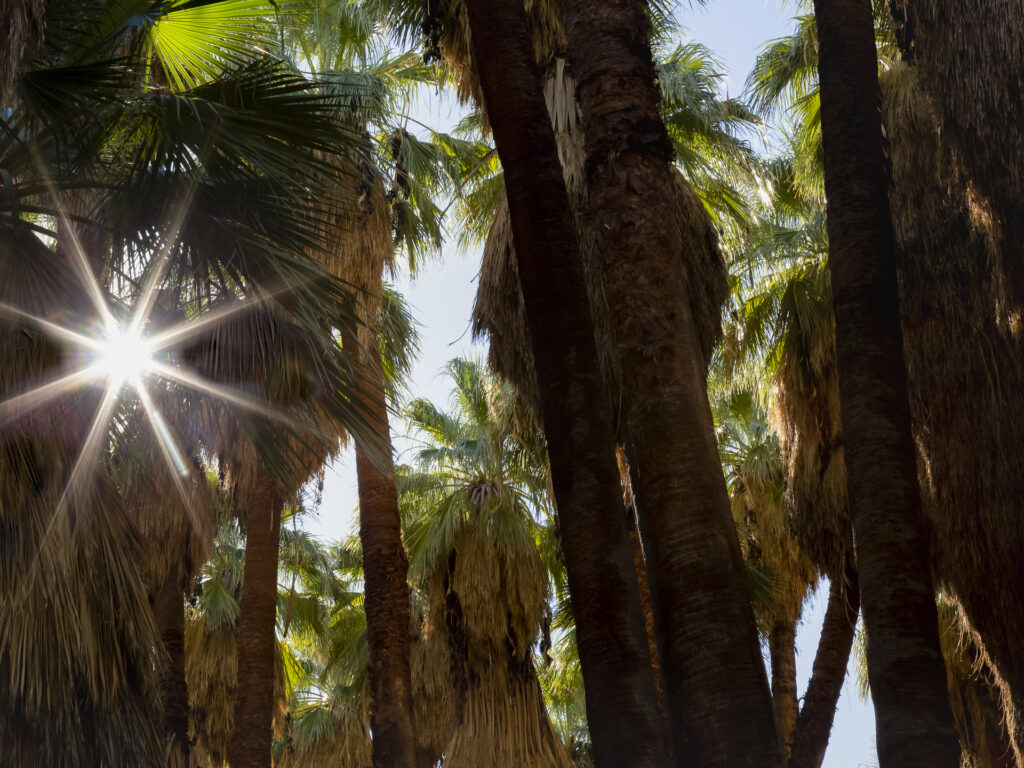
The starburst appearance is created by the size of the aperture opening used to admit light into the camera. The shutter which opens to create the aperture, consists of a number of overlapping metal blades opened and closed either by spring action or electronically. It looks like this:

The opening (aperture), as you can see is not perfectly round, but polygonal in shape. The light reaching the camera sensor is formed by the shape of the aperture. The smaller the aperture is set, the more jagged the edges become, creating this starburst effect. For this photograph I used the smallest aperture setting available with my lens, f/22.
As we moved through the canyon, we encountered this idyllic scene, a small pond amid the palms. We were in the Sonoran Desert, so I presume it is correct to term it an oasis.
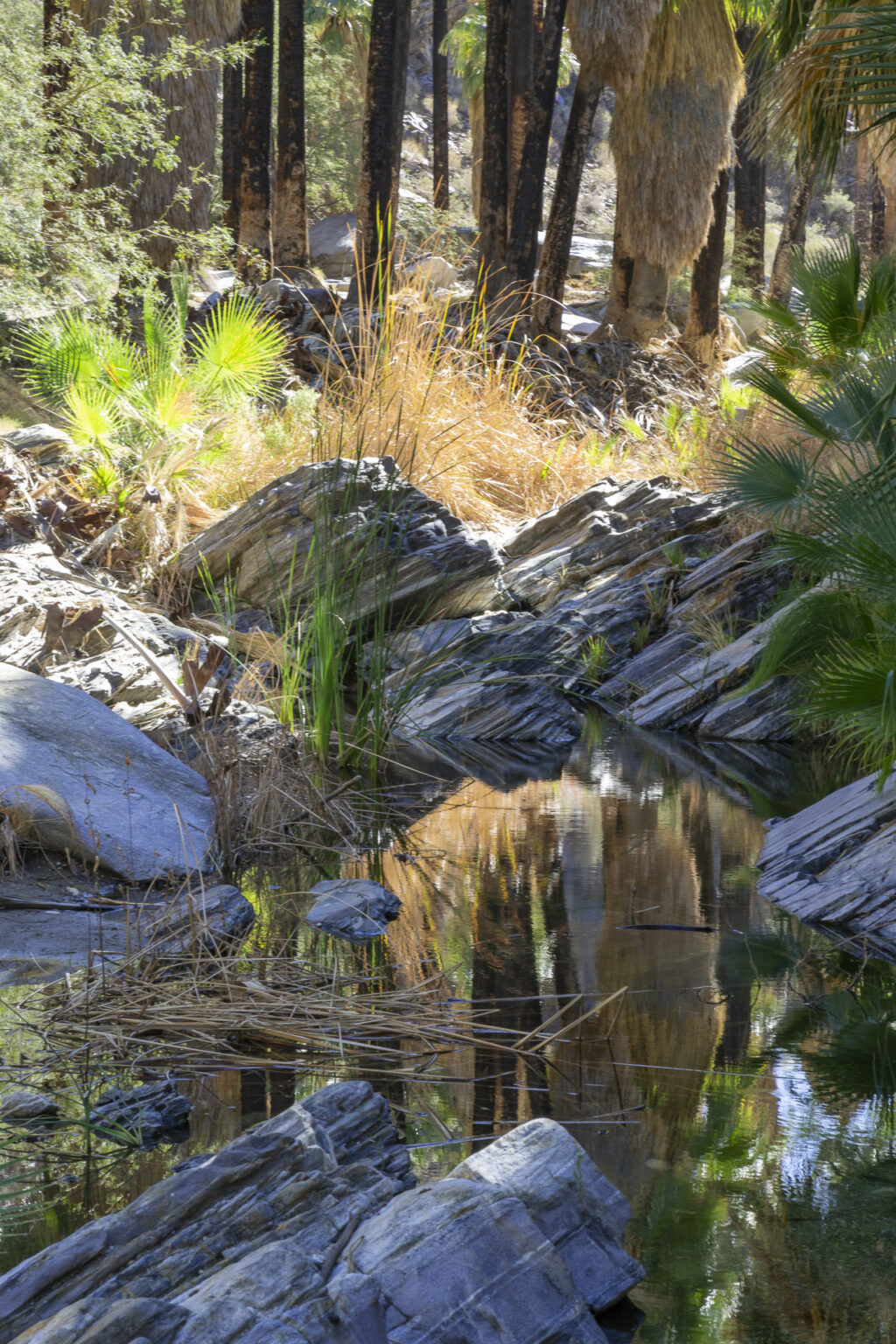
Along the edge of the canyon, I noticed this trio of palms (maybe four), leaning outward from the grove. I like the composition and if a photograph is intended to tell a story, I think this tale is about trees reaching out for the light.
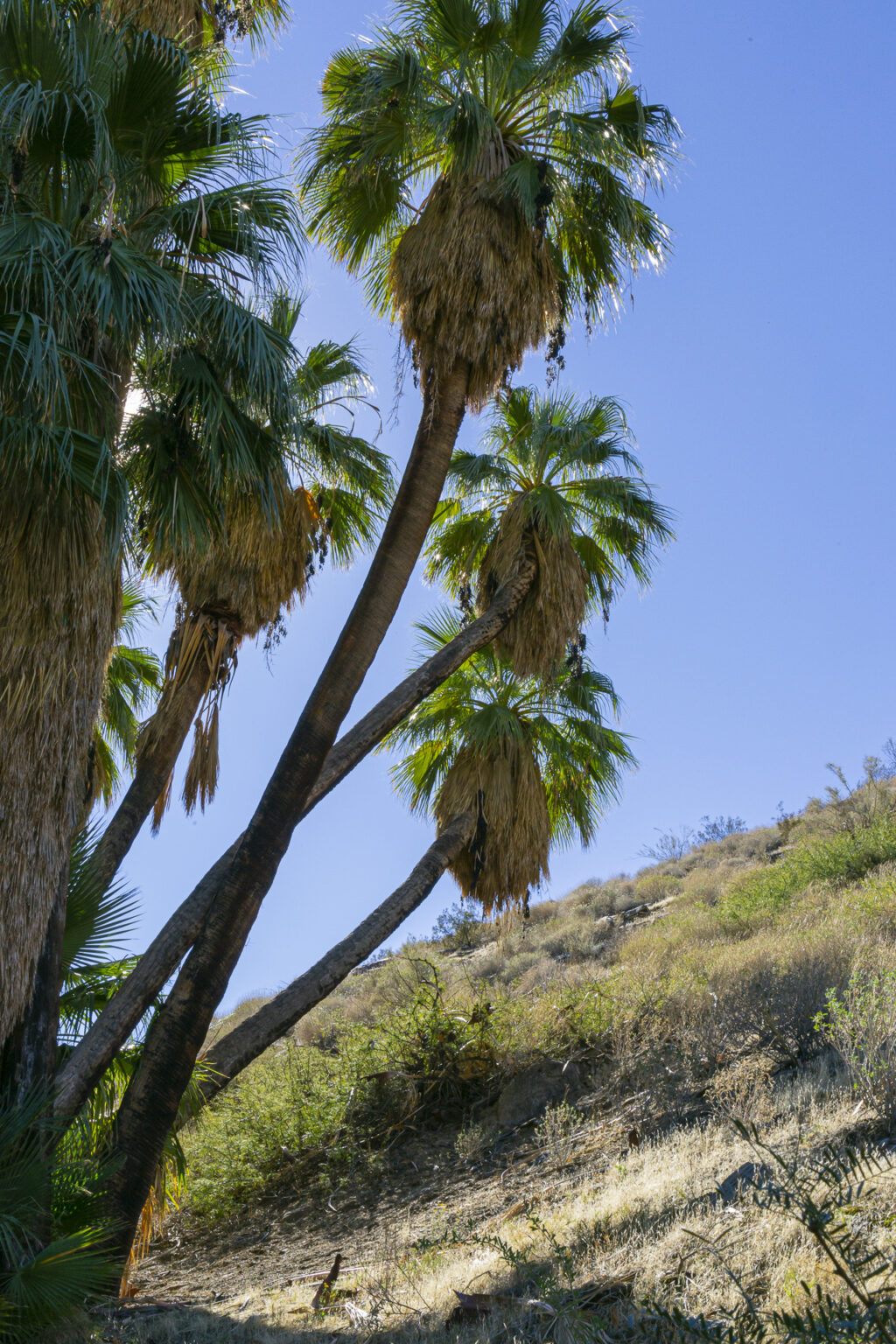
Before beginning our ascent of the Victor Trail, I spotted this visually appealing rock formation, on the opposite side of the canyon. I like this picture for the lighting and shading and the rugged surfaces of the rocks.
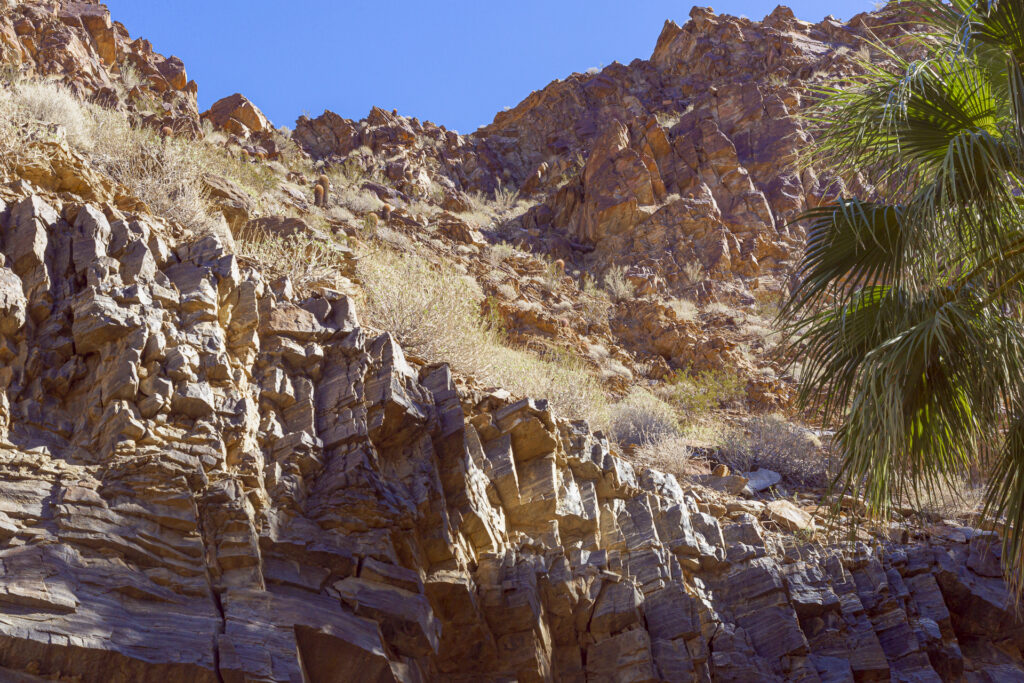
This next picture was taken as we began our way upward on the Victor Trail. It captures a narrower canyon feeding into the one we had just left. I was fortunate to have some sunshine, highlighting the palm trees at the mouth of the canyon and the shrubs on the rock faces.
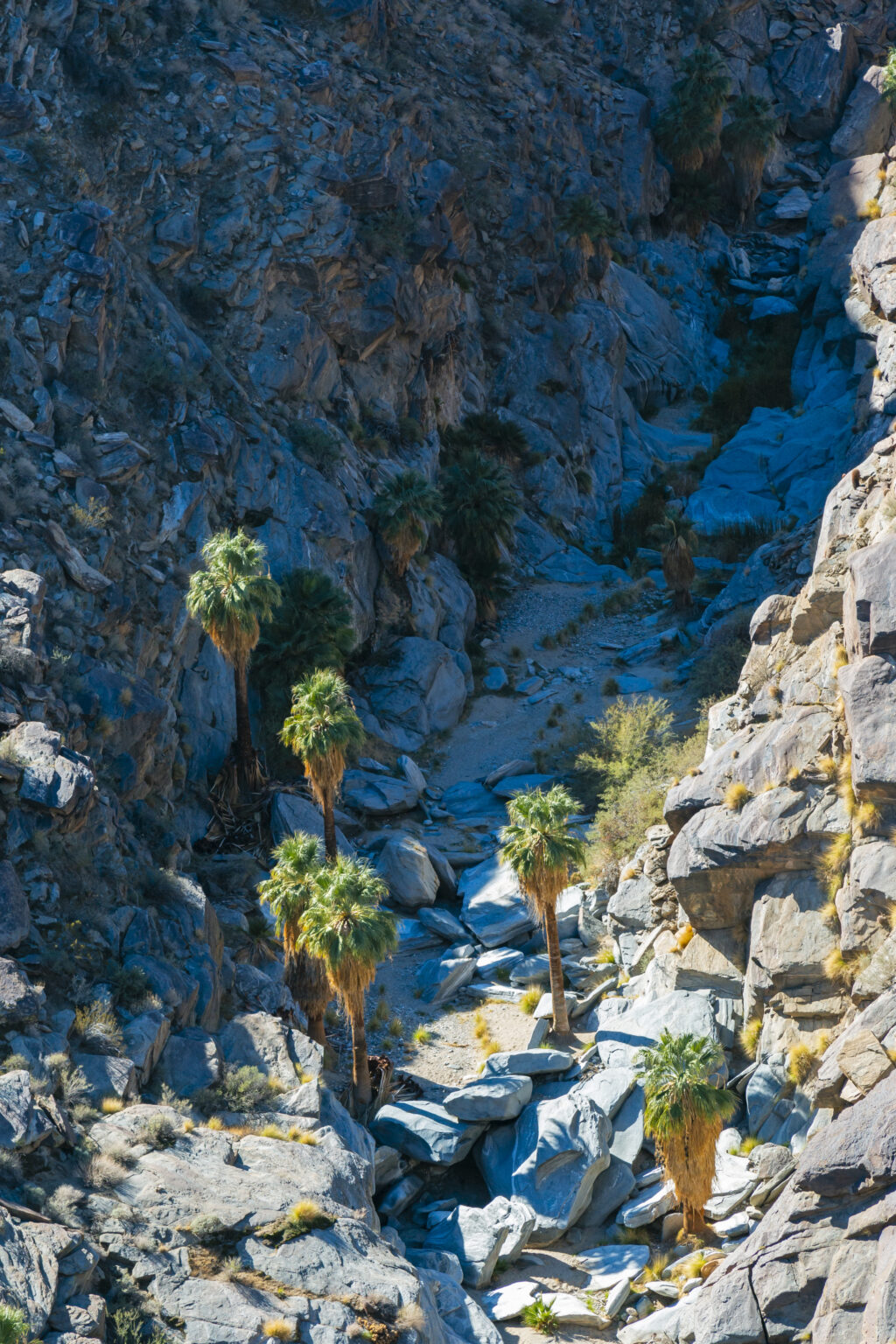
This scene jumped out at me as we continued upward on the Victor Trail. It includes a number of complementary elements that contribute to a good composition as well as some good colour and texture. And of course the moon, albeit quite pale in its waning gibbous phase.
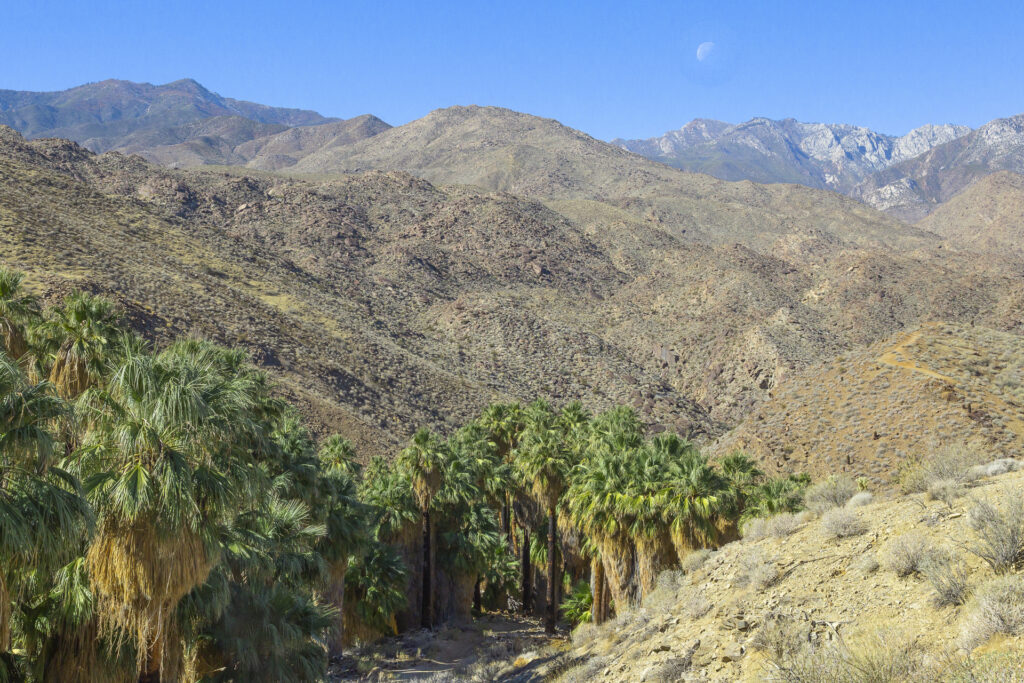
Mountain View
By the time I took this picture, we had meandered our way to a higher elevation. The pathway passed close enough to the edge of the precipice to enable me to shoot downward to photograph the palm groves below.
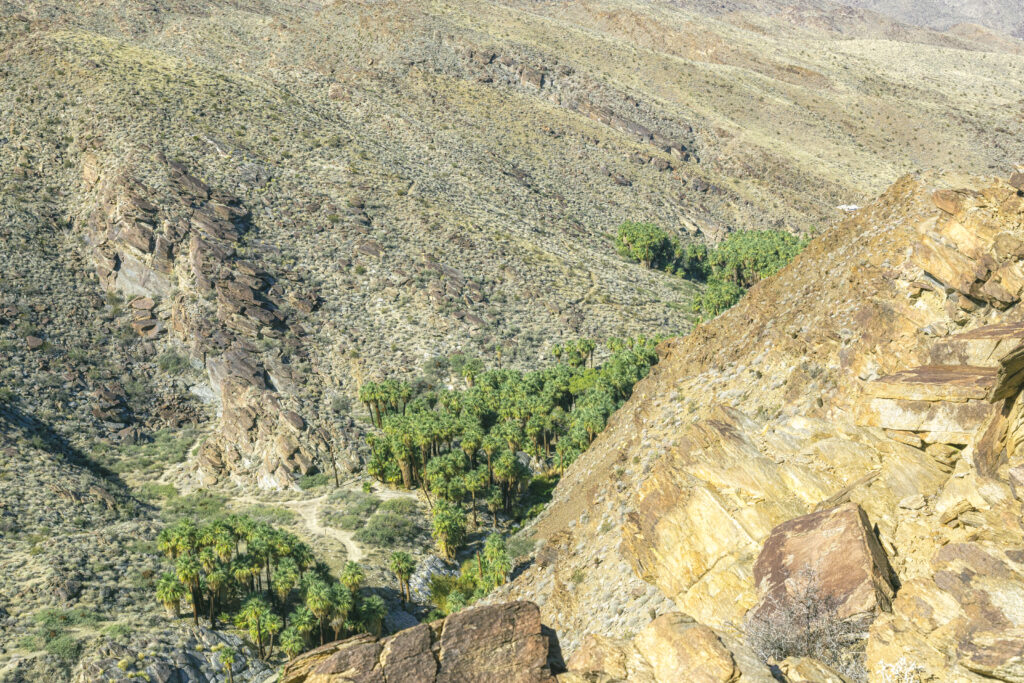
We were at or very close to the summit of the Victor Trail when I took this photograph. I stopped photographing soon after, when I discovered it was advisable to secure my camera and focus my attention on the task of navigating the more rugged, downward section of the trail.
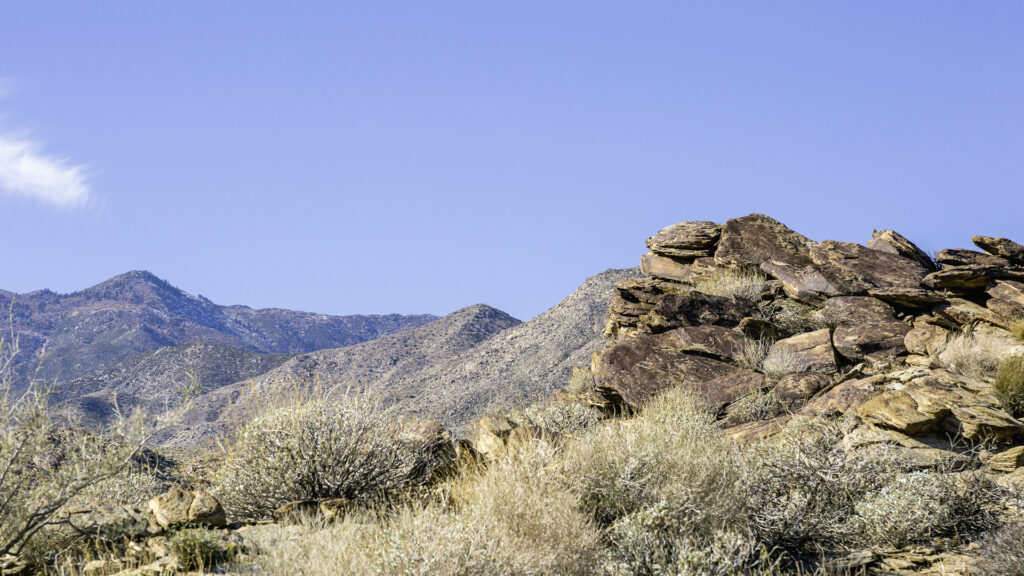
I hope you enjoyed today’s photographs. I expect that this will be the last of my photo excursions before returning home soon. I plan to do some winter photography in Alberta before returning to Arizona in the New Year.
